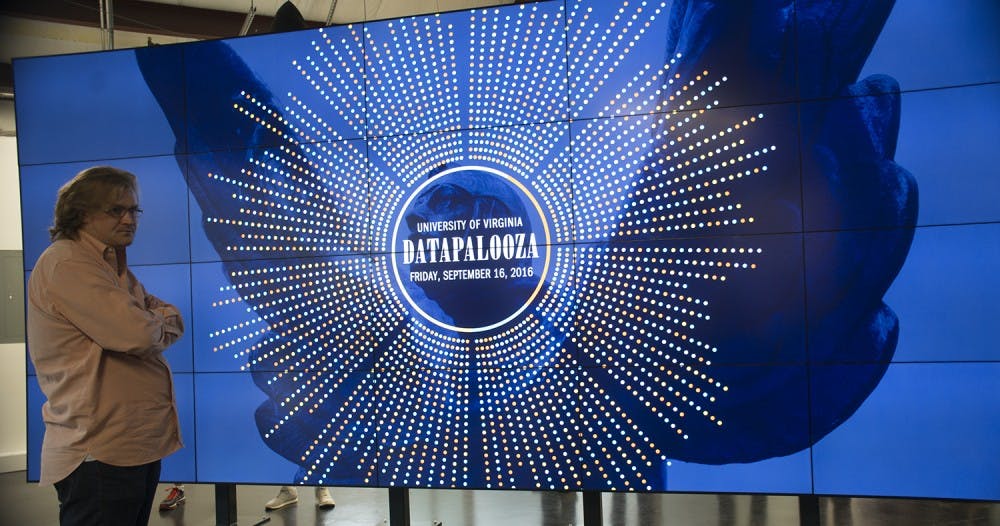The Data Science Institute Friday hosted its second annual Datapalooza, a day-long conference designed to connect people currently conducting data-based research at the University, and to let people know about resources available to them. Speakers, researchers, an open source fair and an interactive art exhibit addressed this year’s main theme, “Visualization.”
Aneesh Chopra, former U.S. Chief Technology Officer, gave the keynote address. He discussed the ways in which he sees government and industry working together to make all types of data — from electrical usage to medical records and school curricula — more accessible both to researchers and to the public.
Chopra discussed examples from then-Secretary of Commerce Herbert Hoover’s agreement to fund research, which facilitated developing and testing in the budding airplane manufacturing industry. He also described how the National Oceanic and Atmospheric Administration provides the raw data used by weather stations, websites and apps throughout the country.
“The most important thing we can do as a society, as Mr. Jefferson said, is the broadening of human knowledge so that we can be an informed electorate,” Chopra said. “I believe that the digital equivalent of this is that all data about us should be available to us in a machine-readable form.”
Karen Jackson, Secretary of Technology for the Commonwealth, spoke on the need for greater accessibility, in terms of both how available and accessible data is made.
“Data is such a daunting topic for so many people,” Jackson said. “Trying to wrap your head around what it means, how do you use it, what problems can it solve [is important].”
Researchers from across disciplines were given an opportunity to show off their work during the panel session.
A wide range of organizations set up tables at the open resource fair. A new version of U.Va. Collab was displayed at the fair showing a redesign that follows updates made to SAKAI — the open-source software off of which Collab is based. Participants could win a coffee mug by correctly identifying five emails as either phishing or legitimate.
The University Library displayed all of its data sharing and storing capacities, and the Scholar’s Lab exhibited what it called “Data in 3 Dimensions — Not 3D Models.”
Participants could choose to attend at total of two out of six breakout sessions to discuss issues like the role of big data in healthcare, cybersecurity and relationships between the public and private sectors.
“The Data Science Initiative was really, or was put into action because, we wanted to highlight and elevate all of the data-driven research across Grounds,” Arlyn Burgess, DSI associate director for operations and strategic initiatives, said. “What we found as we were talking to people was that nobody really knew what everybody else was doing.”
The conference concluded with “Data Visualization as Art,” an exhibit in which British artist Nick Gentry and a number of student artists created pieces that function as interesting visuals and helpful means of conveying information.
“Our main driving point is that everybody is using data, whether they know it or not,” Burgess said.
A full list of presenters and exhibitors, as well as videos of some of the speakers, can be found at https://dsi.virginia.edu/datapalooza.







